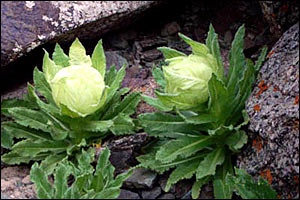Among those countries with the greatest diversity of wildlife, China has more than 6,266 species of vertebrates, 10 percent of the world's total. Among them 2,404 are terrestrials and 3,862 fishes. More than 100 species of wild animals can be found only in China, including such rare animals as the giant panda, the snub-nosed monkey, the golden-haired monkey, South China tiger, brown-eared pheasant, red-crowned crane, red ibis, white-flag dolphin and Chinese alligator. The giant panda, which makes its home in the forests of the Upper Yangtze River in southwest China, weighs on average 135 kg and lives on tender bamboo leaves and bamboo shoots. Because it is extremely rare - just over 1,000 are left at present - the giant panda has become the symbol of the world's protected wild animals.

China's abundance of plant life ranks it among the top in the world. For example, with an area almost exactly that of the continental United States, China has nearly twice as many plant species, about 32,000 (compared to 17,000 for the U.S. and Canada combined) or one-eighth of the world's total. China's plant species include almost all the major plants that grow in the northern hemisphere's frigid, temperate and tropical zones. In addition, China has more than 7,000 species of woody plants, including 2,800-odd tree species. Found only in China are the metasequoia, Chinese cypress, Cathay silver fir, China fir, golden larch, Taiwan fir, Fujian cypress, dove-tree, eucommia and camplotheca acuminata. The metasequoia, a tall species of arbor, is considered to be one of the oldest and rarest plants in the world. The golden larch, one of only five species of rare garden trees in the world, grows in the mountainous areas in the Yangtze River Valley. Its coin-shaped leaves on short branches are green in spring and summer, turning yellow in autumn. China is home to more than 2,000 species of edible plants and over 3,000 species of medicinal plants. Ginseng from the Changbai Mountains, safflowers from Tibet, Chinese wolfberry from Ningxia and notoginseng from Yunnan and Guizhou are particularly well-known Chinese herbal medicines. China has a wide variety of flowering plants, including the world-renowned peony that is indigenous to China and considered one of the country's national flowers.

